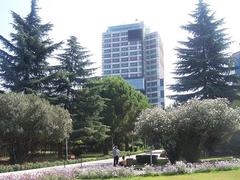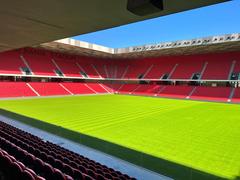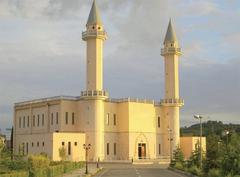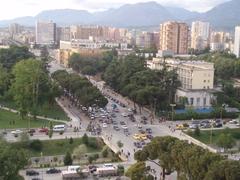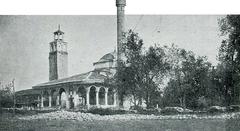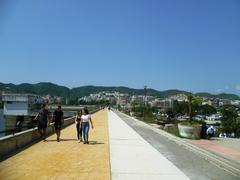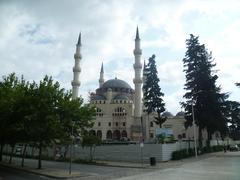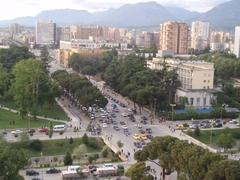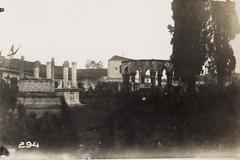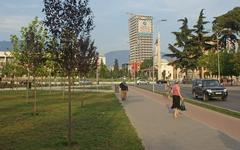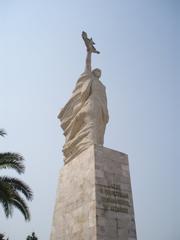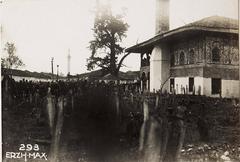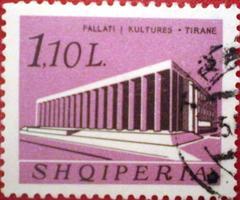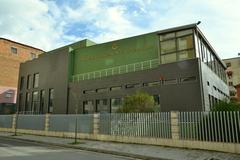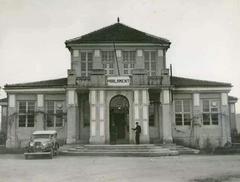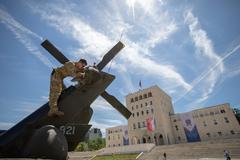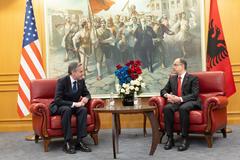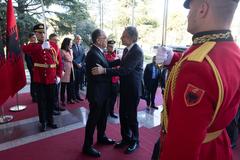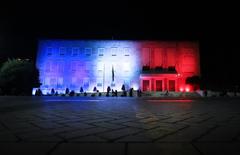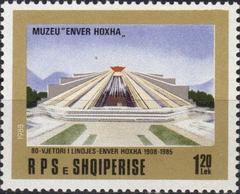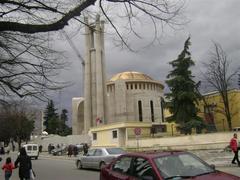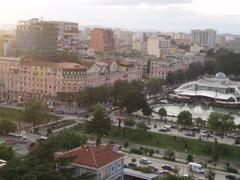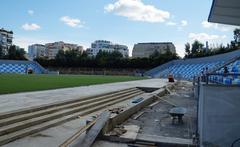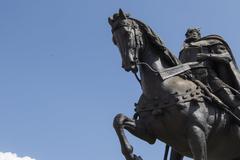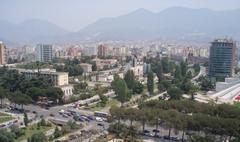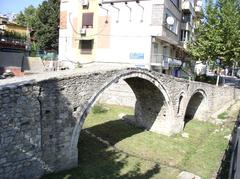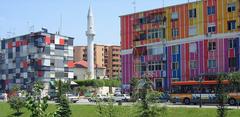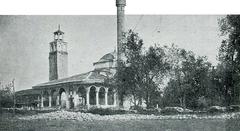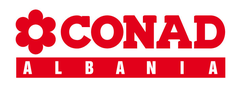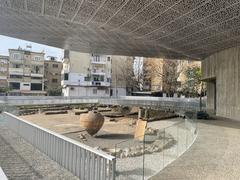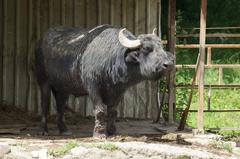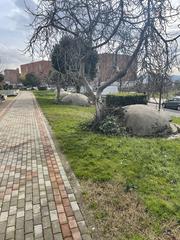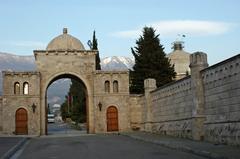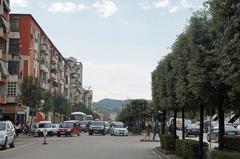National Archaeological Museum Tirana: Visiting Hours, Tickets, and Historical Sites Guide
Date: 14/06/2025
Introduction
The National Archaeological Museum in Tirana is Albania’s leading institution for the preservation and presentation of the nation’s archaeological legacy. Founded in 1948, it is the country’s oldest museum and offers visitors an immersive journey through more than 5,000 years of history, encompassing prehistoric settlements, Illyrian tribes, and the Greek, Roman, Byzantine, and medieval eras. Set on Mother Teresa Square in central Tirana, the museum’s building—originally designed by Italian architect G. Bosio—adds architectural significance to its cultural value (Wikipedia; Visit Tirana).
With over 2,000 artifacts on display from a repository exceeding 200,000 items, the museum’s exhibitions are arranged chronologically and thematically. Highlights include prehistoric tools, Illyrian weaponry, Greek and Roman mosaics, and early Christian and Byzantine religious objects. These artifacts reveal Albania’s role as a crossroads of Mediterranean and Balkan civilizations (Into Albania; IETT).
Accessible facilities, affordable tickets, and guided tours in Albanian and English make the museum welcoming to all. Its central location also provides easy access to other landmarks, such as Skanderbeg Square, the National History Museum, and the vibrant Ish-Blloku district. Special exhibitions and educational events ensure that the museum remains a dynamic center of archaeological research and public history (Albania 360).
Contents
- Introduction
- Museum History and Cultural Significance
- Location and Architecture
- Highlights of the Collections
- Prehistoric and Illyrian Heritage
- Classical Antiquity: Greek and Roman Influences
- Late Antiquity and Medieval Period
- Visitor Information
- Opening Hours
- Ticket Prices
- Accessibility
- Guided Tours and Visitor Etiquette
- Special Exhibitions and Events
- Nearby Attractions
- Practical Tips for Visitors
- Frequently Asked Questions (FAQ)
- Conclusion
Museum History and Cultural Significance
Established on November 1, 1948, the National Archaeological Museum in Tirana was the first museum founded in Albania after World War II, signifying a pivotal moment in the country’s cultural renaissance (Wikipedia; Visit Tirana). Initially, it combined both archaeological and ethnographic collections but focused exclusively on archaeology in 1976 (IETT). The museum is housed in a landmark building on Mother Teresa Square, also home to the University of Tirana Rectorate (Tirana.al).
Highlights of the Collections
Prehistoric and Illyrian Heritage
The museum’s collection begins with rare artifacts from the Paleolithic and Neolithic periods, including flint tools and ceramics from sites such as Xara, Maliq, and Blazi Cave (Albanian Archaeological Heritage). Bronze and Iron Age items include funerary objects, weapons, and jewelry, such as axes, swords, and intricate gold ornaments from Illyrian tumulus burials. These give insight into the technology, social structure, and artistry of Albania’s earliest inhabitants (Historic Hotels of Europe).
Classical Antiquity: Greek and Roman Influences
With the arrival of Greek colonists along the Albanian coast, the region experienced significant Hellenistic influence. The museum features imported Attic pottery, marble statuettes of deities, and artifacts from Apollonia and Durrës. Roman period displays include statues, mosaics, coins, household items, and funerary objects—reflecting the economic and cultural vitality of ancient Albanian cities (Greek Influence in Albania; Roman Artifacts).
Late Antiquity and Medieval Period
Artifacts from the transition to Christianity include marble altar pieces, crosses, reliquaries, and mosaic fragments from basilicas such as Butrint (Butrint UNESCO Site). The Byzantine and post-Roman sections display intricately carved capitals, church frescoes, and liturgical vessels, illustrating religious and artistic continuity into the medieval era.
Visitor Information
Opening Hours
- Tuesday to Sunday: 9:00 AM – 5:00 PM
- Monday: Closed
- Public holidays: Closed
Ticket Prices
- General Admission: 300–400 Albanian Lek (€2–€4)
- Discounts: Available for students, seniors, and children
- Children under 12: Free entry
- Group rates: Available with advance booking
Accessibility
- Wheelchair access via ramps and elevators
- Accessible restrooms and baby-changing facilities
- Stroller-friendly policies
Guided Tours and Visitor Etiquette
- Guided tours in Albanian and English; other languages available on request
- Audio guides and brochures offered for independent visitors
- Photography without flash permitted; tripods and flash are forbidden
- Please do not touch the exhibits and follow staff instructions
Special Exhibitions and Events
The museum regularly hosts temporary exhibitions, workshops, and lectures in collaboration with local and international institutions. These events often highlight new archaeological findings and thematic displays, enriching the visitor experience (Museum Events).
Nearby Attractions
The museum’s central location makes it an ideal starting point for exploring Tirana’s historical and cultural sites:
- Mother Teresa Square: A vibrant public space hosting events and surrounded by major institutions
- Palace of Congresses: A venue for concerts and exhibitions
- Qemal Stafa Stadium: Important to Albania’s sporting history
- Grand Park of Tirana: An expansive green space with trails, a lake, and monuments
- Postbllok Memorial: An open-air memorial to Albania’s communist past
- Rinia Park and Ish-Blloku: Popular areas for dining and nightlife
- National Gallery of Art: Showcasing Albanian art across centuries
- Pyramid of Tirana: A distinctive landmark being revitalized as a cultural center
- Saint Procopius Church and Resurrection Cathedral: Reflecting Tirana’s religious diversity
All attractions are within walking distance or a short ride from the museum (Albania Tourist Guide; Albania 360).
Practical Tips for Visitors
- Plan ahead: Check the museum’s website or social media for the latest on hours, ticket prices, and exhibitions
- Allow time: Allocate 1.5–2 hours to explore the collections
- Combine visits: Pair the museum with nearby sites for a rich cultural day
- Dress comfortably: The galleries are extensive—wear appropriate shoes
- Language support: Use guided tours or audio guides if you do not speak Albanian
- Respect the environment: Eating and drinking inside galleries is not allowed; maintain a quiet atmosphere
Frequently Asked Questions (FAQ)
Q: What are the visiting hours?
A: Tuesday to Sunday, 9:00 AM to 5:00 PM. Closed on Mondays and public holidays.
Q: How much are tickets?
A: General admission is 300–400 Albanian Lek, with discounts for students and seniors. Children under 12 are free.
Q: Are guided tours available?
A: Yes, in Albanian and English. Book in advance for other languages or groups.
Q: Is the museum wheelchair accessible?
A: Yes, with ramps, elevators, and accessible restrooms.
Q: Can I take photos inside?
A: Photography without flash is permitted in most areas.
Conclusion
The National Archaeological Museum Tirana is a must-visit destination for anyone interested in Albania’s deep and diverse past. With its extensive collections, informative exhibits, and central location, it offers a memorable and educational experience for all visitors. Whether you are passionate about history or exploring Tirana’s cultural scene, the museum provides a gateway into the enduring legacy of Albanian civilization.
For up-to-date information, special exhibitions, and guided tour bookings, visit the official museum website, check out Visit Tirana, or consult the Albanian Institute of Archaeology. Enhance your visit with the Audiala app for personalized guidance and insider tips.
References
- Visit Tirana
- Into Albania
- Albania Tourist Guide
- Tirana.al
- Albanian Institute of Archaeology
- Albania 360
- Wikipedia
